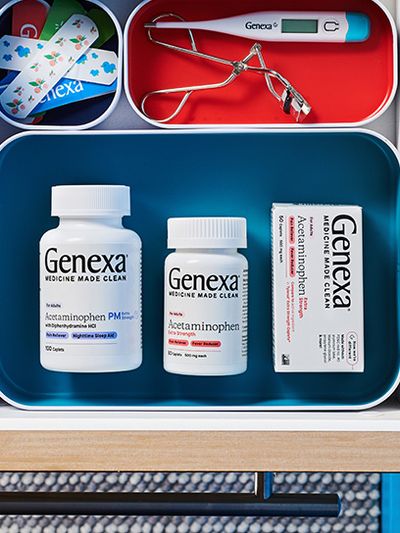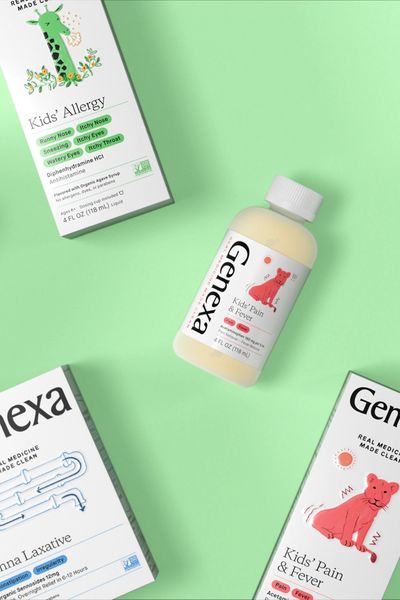Understanding Vaccine Ingredients
What's In A Vaccine?
Table of contents:
Vaccines are a highly debated topic in the world of medicine, and whether you’ve previously gotten vaccinated as needed without a second thought or you’ve hesitated before getting an injection of any sort, everyone can benefit from having a more thorough understanding of the substances entering their bodies.
While vaccines are generally deemed safe, knowing what kinds of inactive ingredients may be added to a vaccine can give you a fuller picture of what you’re getting. This is your complete guide to common inactive ingredients used in vaccines, and why they are added. Let’s get into it.
Understanding Inactive Vaccine Ingredients: What's In A Vaccine?
One way vaccines work is by helping the immune system recognize a specific virus and producing antibodies for that virus, which helps increase your immune response in the long run. Once antibodies are developed, they can assist your immune system in fighting off a pathogen that it is already familiar with.
The World Health Organization and the Food and Drug Administration both consider many factors before deeming a vaccine as safe. Clinical trials can help determine if a vaccine is safe for public health use.
Common Inactive Vaccine Ingredients
Because the world of medicine is constantly changing and evolving, vaccines today are much safer than they once were.
That said, having some suspicions about inactive ingredients is still completely understandable, because if we don’t want inactive ingredients in other products, why would we want them in our vaccines?
The truth is that inactive ingredients in vaccines are not the harmful substances you might expect. Plus, inactive ingredients have specific purposes in vaccines, like:
- Helping to provide immunity/protection
- Keeping the vaccine safe and long-lasting
- Helping produce the vaccine in the first place
There are a few different categories of inactive ingredients that may be added to a vaccine:
- Preservatives: Preservatives are added to vaccines to help prevent contamination of the vaccine.
- Adjuvants: Adjuvants, like aluminum salts, help boost your body’s response to a vaccine.
- Stabilizers: Stabilizers like sugars and gelatin help ensure that the vaccine remains effective after the production process.
- Residual cell culture materials: Residual cell culture materials, like egg protein in MMR vaccines, work to help grow enough of the virus or bacteria to actually make the vaccine in the first place. If you have egg allergies, it is possible to have an allergic reaction but it is rare. A healthcare provider will be able to advise if a vaccine is safe for you to receive.
- Residual inactivating ingredients: Formaldehyde is an example of a residual inactivating ingredient, and this type of ingredient helps kill viruses or toxins that appear during the manufacturing process.
- Residual antibiotics: Antibiotics are used to help prevent bacteria from contaminating a vaccine during the production process.
Now that the basics have been outlined, let’s get into the details about some of the most common specific ingredients that get added to vaccines.
Aluminum
Aluminum salts such as aluminum hydroxide, aluminum phosphate, potassium aluminum sulfate, and mixed aluminum salts work as adjuvants in vaccines, meaning that they enhance your immune system response to any given vaccination.
Essentially, this means that adjuvants help increase your immunity against a disease.
Aluminum-based adjuvants have been used for over six decades, and adverse reactions have been reported to be rare. Additionally, the total amount of aluminum present in vaccines is less than what people are usually exposed to in their diets.
Formaldehyde
Similar to aluminum, formaldehyde, too, has a long history of being used safely in vaccines. Basically, formaldehyde is used to help inactivate viruses and bacteria so that you build immunity to them without actually falling ill. Formaldehyde also has preservative properties.
Formaldehyde is diluted during the manufacturing process, but residual formaldehyde may find its way into the vaccine itself. That said, these amounts of residual formaldehyde are too small to do harm, and your body actually produces some formaldehyde naturally to produce energy and build necessary materials like amino acids.
Formaldehyde is continuously processed by your body regardless of whether the formaldehyde in question was produced by your body naturally or introduced by an external source, like a vaccine.
Any health risks associated with exposure to formaldehyde are highest when formaldehyde is inhaled through the air, so the trace amounts found in vaccines are generally nothing to worry about.
Ingredients Used During the Production Process
Certain ingredients may be used during the production process, but do not actually get added to vaccines themselves. This is because these ingredients may be useful for production, but they are not needed in order for the vaccine to remain effective afterward, so they are removed such that only trace amounts remain in the vaccines.
Additional Vaccine Ingredients
Vaccines typically contain small amounts of other ingredients called stabilizers. An example of a stabilizer is sucrose. Stabilizers help ensure the active ingredients in vaccines remain effective.
Cell-growth material is a type of ingredient that helps grow the antigens that will be used in the vaccine. Antigens often consist of viruses or bacteria, proteins made by viruses or bacteria, or toxins produced by bacteria that cause illness, and these are the main component of a vaccine. Essentially, you can thank antigens for the immunity your body has after you receive a vaccination. Antigens are considered an active vaccine ingredient.
Some types of vaccines require a single dose while others require multiple doses. A preservative called thimerosal helps prevent the growth of pathogens in a vaccine. Thimerosal is typically added to multi-dose vials of certain vaccines.
There are also tiny amounts of inorganic particles that are not usually listed as vaccine ingredients. They do not affect vaccine safety and pose no threat to public health.
Inactive ingredients are also commonly used during the production process, and these are germ-killing materials that weaken or kill viruses, bacteria, or other toxins in the vaccine. Formaldehyde is an example of this type of ingredient.
Lastly, antibiotics are also commonly used during production, and this helps keep external germs and bacteria from finding their way into a vaccine, or growing in a vaccine and contaminating it. Neomycin is one commonly used active ingredient.
Although trace amounts of these ingredients can generally wind up in the final product, these are nothing to worry about because the amounts are too small to pose health risks.
Are Preservatives Really Necessary?
Outside the world of medicine and vaccines, you are probably used to hearing that preservatives are bad and you should avoid them at all costs.
In the case of vaccinations, though, preservatives play a very important role. Preservatives are added to some vaccinations in order to help prevent bacteria or fungi from growing, because these bacteria and fungi have the potential to end up contaminating the vaccine, and may be introduced into the vaccine during its use. Thus, adding preservatives helps keep these unwanted substances away.
Treating Vaccine Side Effects
Arguably one of the biggest concerns about vaccinations is the potential for side effects to occur after being immunized.
Immunization side effects can be worrying and any vaccine has the potential to cause side effects. However, side effects are usually very minor. Common side effects of vaccines are a sore arm, a low-grade fever, or minor swelling and bruising near the injection site.
The specific side effects associated with vaccines depend on which vaccine you are receiving, and you can prepare yourself ahead of time by doing your research and reading about what side effects to expect. For example, the influenza vaccine is commonly associated with side effects like a runny nose, congestion, and a headache.
In general, side effects caused by a vaccine do not last more than a couple of days, and in the rare event that your symptoms persist, you should call your doctor for further guidance.
Most times, you can easily manage your side effect symptoms right at home, and over-the-counter medicines may be able to help you with this.
Taking some form of pain reliever can help reduce the swelling and discomfort you may experience near the site of the injection. There are also some medicines available that can help reduce bruising, which may be helpful if you wind up with some bruises after a vaccination.
When it comes to getting your children vaccinated, vaccines can be scary for your kids, and the side effects may make matters worse. That said, acetaminophen can do the trick for a sore injection site and a low-grade fever. Acetaminophen works double-time, helping to relieve minor aches and pains while also acting as a fever reducer, and as long you follow the proper dosages for your child, it is perfectly safe.
When choosing over-the-counter medications, it never hurts to look carefully for options that have very minimal inactive ingredients, and it is even better to choose products with clean, organic inactive ingredients. Some common artificial, inactive ingredients can cause adverse effects, so steering clear of these may be the best path.
Regardless, side effects from a vaccine are generally very minor and easy to treat, but your doctor will be able to answer any questions or concerns you may have.
The Bottom Line
In most cases, you are encouraged to avoid inactive ingredients, but the inactive ingredients used in vaccines are critical to their effectiveness and safety.
There are a few main categories of inactive ingredients that get added to vaccines, including preservatives, adjuvants, stabilizers, and inactivating ingredients, to name a few. Each of these categories plays a different role, varying from maintaining the vaccine’s effectiveness to ensuring that unwanted bacteria and fungi do not contaminate the formula.
The world of medicine today is much more advanced than it once was, and vaccines are held to high standards of safety and effectiveness… as are the ingredients that go into them.
Experiencing side effects from vaccination can be worrisome, but this is actually no cause for concern, and generally is not attributable to any kind of health risks from inactive ingredients. Inactive ingredients, especially those used during production, are only found in vaccines in trace amounts that are too small to pose real risks.







